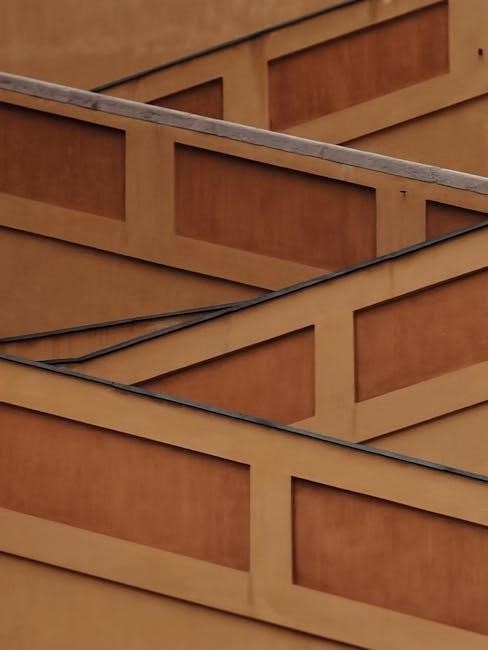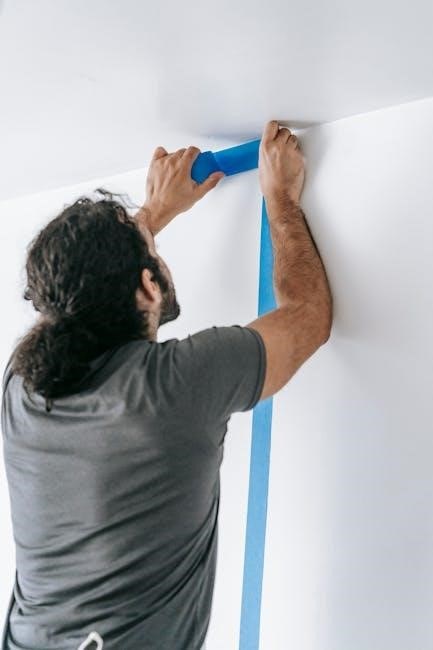
graphic guide to residential design
The introduction to residential design covers essential concepts and terminology used in the field, including design principles and elements, as outlined in a comprehensive graphic guide online resources.
Importance of External Design
The external design of a residential property plays a crucial role in forming first impressions, as it forms the interface between the home and the wider world, and is subject to various design principles, including contextual design, which considers the local climate, vernacular style, and surrounding landscape, as well as architectural heritage, and using local building materials and techniques to create a sense of harmony and balance, and this is reflected in the graphic guide to residential design, which provides a comprehensive visual resource for understanding the importance of external design, and how it contributes to the overall aesthetic and functional appeal of a residential property, and its impact on the environment and the community.
Contextual Design Principles
Contextual design principles are essential in residential design, as they ensure that the building complements its surroundings, taking into account the local climate, culture, and architectural heritage, and the graphic guide to residential design provides valuable insights into these principles, including the use of local materials, and the consideration of the site’s topography and orientation, to create a sense of harmony and balance between the building and its environment, and the guide also explores the importance of respecting the existing urban fabric, and the role of contextual design in creating a sense of community and belonging, and how these principles can be applied in practice to create functional and aesthetically pleasing residential spaces that are tailored to their specific context. The application of these principles requires a deep understanding of the local context.

A comprehensive online resource providing detailed information and guidance on residential design principles and elements is now available to users everywhere instantly.
Comprehensive Visual Resource
The graphic guide to residential design serves as a comprehensive visual resource, offering a wide range of topics and design principles to consider when creating a residential space. This resource provides users with a detailed understanding of the design process, from initial concept to final product. The guide is filled with visual aids, such as diagrams and illustrations, to help users better comprehend the design principles and elements involved in residential design. By utilizing this resource, users can gain a deeper understanding of the design process and create a residential space that is both functional and aesthetically pleasing. The guide is an invaluable tool for anyone looking to create a well-designed residential space, and its comprehensive nature makes it an essential resource for users of all levels. The resource is easy to navigate and understand.
Effective Communication of Design Intentions
The graphic guide to residential design emphasizes the importance of effective communication of design intentions, allowing users to clearly convey their vision to clients, contractors, and other stakeholders. This is achieved through the use of visual aids, diagrams, and illustrations that help to clarify the design process; By utilizing this guide, users can ensure that their design intentions are accurately communicated, reducing the risk of misinterpretation and errors. The guide provides users with the tools and techniques necessary to effectively communicate their design vision, resulting in a more efficient and successful design process. The use of clear and concise language, combined with visual aids, makes it easier for users to convey their design intentions and bring their vision to life. This leads to better collaboration and a more successful outcome.

Design Principles for Residential Buildings
Residential buildings require careful design consideration using a graphic guide to ensure functional and aesthetically pleasing spaces for occupants to live comfortably always online.
Combining Beauty and Functionality
Combining beauty and functionality is a crucial aspect of residential design, as it enhances the overall living experience. A well-designed home should not only be aesthetically pleasing but also functional and efficient. The graphic guide to residential design provides valuable insights and practical tips on how to achieve this balance. By considering factors such as natural light, ventilation, and spatial layout, designers can create homes that are both beautiful and functional. This approach also involves selecting materials and finishes that are durable, sustainable, and easy to maintain. Furthermore, the graphic guide offers a range of design solutions and ideas that can be tailored to suit different lifestyles, budgets, and architectural styles, making it an indispensable resource for architects, designers, and homeowners alike, to create beautiful and functional living spaces that meet their needs and exceed their expectations, with careful planning and attention to detail.
Company Design Principles
At design companies, certain principles guide the creation of residential spaces. These principles prioritize client needs, sustainability, and community engagement. The company’s design approach is centered around collaboration, innovation, and attention to detail. By embracing these principles, designers can craft unique and functional homes that reflect the client’s personality and lifestyle. The company’s commitment to excellence is evident in their portfolio, showcasing a range of residential projects that demonstrate a deep understanding of design principles and their application. With a focus on building lasting relationships, the company strives to deliver exceptional design solutions that exceed client expectations, while also contributing to the betterment of the community and the environment, through responsible and thoughtful design practices that enhance the quality of life for residents and users. Effective design principles are essential to their success.

Benefits of the Graphic Guide
Provides practical insights and valuable resources for architects, designers, and homeowners, enhancing residential design projects with expert knowledge and visual guidance online always.
Practical Insights into Residential Design
The graphic guide offers practical insights into residential design, providing readers with a deeper understanding of the design process and its various components, including spatial relationships and functional requirements.
The guide is filled with detailed examples and case studies, illustrating successful design solutions and common pitfalls to avoid, making it an invaluable resource for designers and homeowners alike.
By exploring the intricacies of residential design, readers can gain a better appreciation for the complexities involved in creating functional and aesthetically pleasing living spaces, and develop the skills and knowledge needed to bring their design visions to life, using the guide as a trusted companion throughout the design journey, from conception to completion, and beyond.
Value for Architects, Designers, and Homeowners
The graphic guide to residential design provides significant value for architects, designers, and homeowners, offering a comprehensive resource that caters to their diverse needs and expectations.
By leveraging the guide’s expert knowledge and visual clarity, professionals can enhance their design skills and stay up-to-date with the latest trends and best practices.
Homeowners, on the other hand, can benefit from the guide’s practical insights and advice, enabling them to make informed decisions about their residential design projects and collaborate more effectively with architects and designers, ultimately resulting in living spaces that are both functional and beautiful, and that meet their unique lifestyle requirements and personal preferences, with the guide serving as a trusted reference point throughout the design and construction process.

Design Elements and Principles
Essential concepts include line, shape, form, texture, and color, forming the foundation of residential design, as outlined in a graphic guide using online resources effectively always.
Building Blocks of Design
The building blocks of design refer to the fundamental elements that comprise a residential design, including line, shape, form, texture, color, value, and space. These elements are the foundation upon which a design is created, and are used to create a visually appealing and functional space. A graphic guide to residential design would typically include an explanation of these elements, and how they interact with each other to create a cohesive design. The guide would also provide examples of how these elements can be used in different design scenarios, and offer tips and advice for effectively incorporating them into a design. By understanding the building blocks of design, individuals can create a well-designed and functional residential space that meets their needs and exceeds their expectations, using online resources and design principles effectively.
Rules of Arrangement
The rules of arrangement in residential design refer to the principles that guide the organization and placement of design elements. These principles include balance, contrast, rhythm, and proportion, and are used to create a visually appealing and harmonious space. A graphic guide to residential design would explain these principles and provide examples of how to apply them in different design scenarios. The guide would also discuss how to use these principles to create a sense of unity and coherence in a design, and how to balance different elements to create a functional and beautiful space. By following the rules of arrangement, individuals can create a well-designed residential space that is both functional and aesthetically pleasing, using the principles outlined in the guide to inform their design decisions and create a cohesive look. Effective arrangement is key to good design.